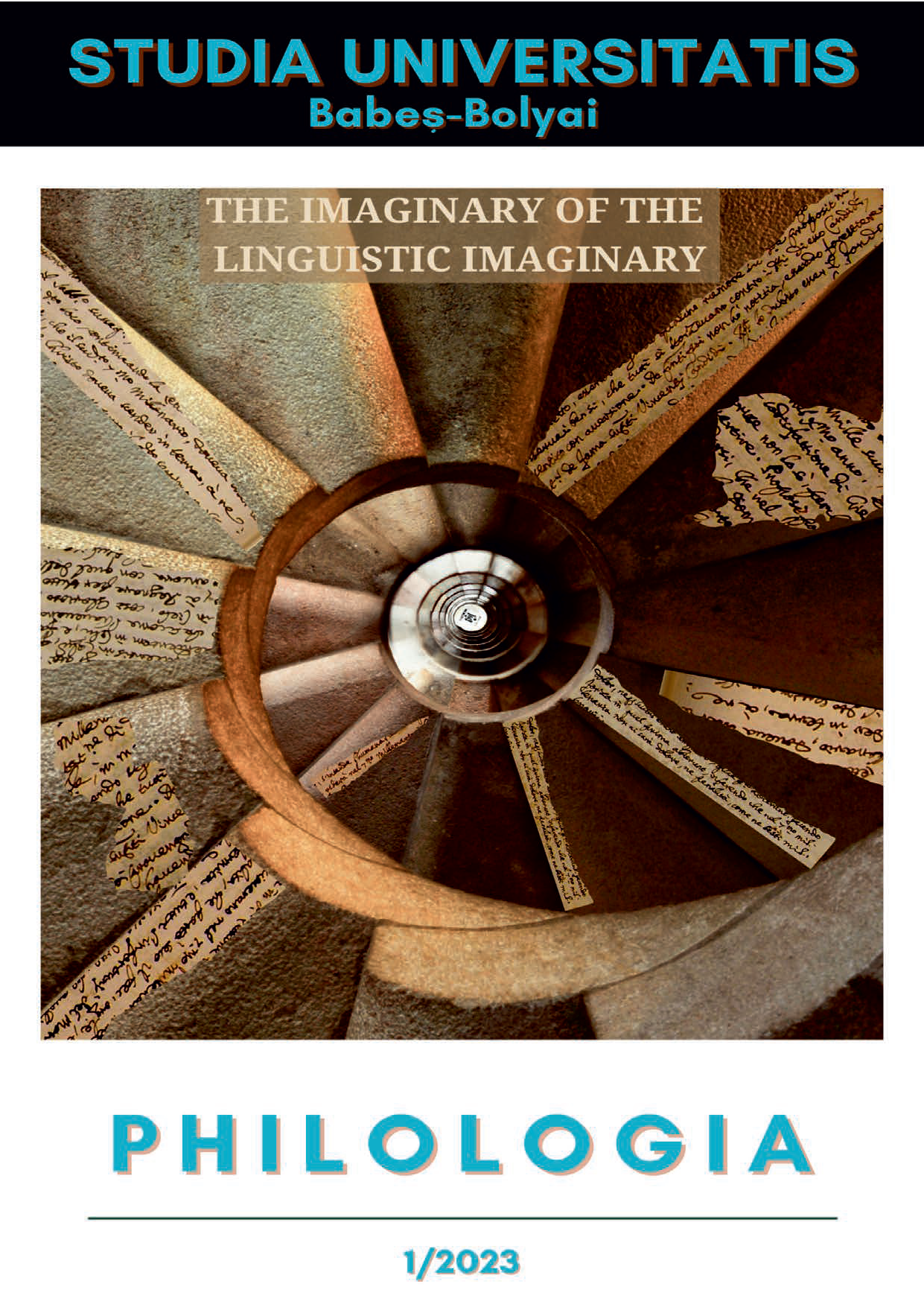HOMO LUDENS AMONG CULTURES AND TRANSLATIONS – A PRACTICAL APPROACH
DOI:
https://doi.org/10.24193/subbphilo.2023.1.11Keywords:
abusive fidelity, communication, cultureme, equivalence, meaning, mediation, wordplayAbstract
Homo Ludens among Cultures and Translations – A Practical Approach. Not only once have we learned about the parasitic, mimetic structure of a translation, or the inauthenticity of the invisible translator, a performer without a stage, as Robert Wechsler would describe it. Yet, beyond such a shallow disparaging perspective, (good) translation obviously means art, being shaped by the translator’s expertise, talent and imagination, and resembling a creative Lego game rather than an already set puzzle game, hence its uniqueness. The present study aims to briefly highlight certain key-concepts in this ambiguity-fraught domain, such as abusive fidelity, domestication and foreignization (covert and overt translation) or culture-bound terms, the so-called culturemes. Mainly relying on practical illustrations, encountered while translating a series of jokes from the German language into Romanian, during a translation course within the Leipzig University, the article will focus on the ludic aspect of translation, which paradoxically does not always trigger a laughter on the part of the translator, sometimes faced not only with difficulties, but with impossible equivalences. Ultimately, the study will try to justify the reasons for which communicative translation should prevail over the semantic translation or why an authentic target-language text proves superior to a faithful-to-the-source-text translation.
REZUMAT. Homo ludens, printre culturi și traduceri – o abordare practică. Nu de puține ori ne-am confruntat cu diferite formulări referitoare la structura parazită, mimetică a traducerilor sau la lipsa de autenticitate a traducătorului invizibil, un interpret fără scenă, așa cum îl descrie Robert Wechsler. Totuși, dincolo de o asemenea perspectivă depreciativă, traducerea (de calitate) înseamnă, cu siguranță, artă, modelată de experiența, talentul și imaginația traducătorului. Comparabilă cu un joc creativ realizat din piese Lego, mai degrabă decât cu un joc de puzzle prestabilit, orice traducere este unică. Studiul de față își propune să evidențieze câteva concepte-cheie din acest domeniu plin de ambiguități, printre care conceptul de fidelitate abuzivă, adaptare sau înstrăinare (în alți termeni, traducere implicită și traducere explicită), și cultureme, acei termeni ancorați într-o cultură. Articolul se bazează, în principiu, pe o serie de exemple practice, oferite de traducerea unor glume din limba germană în limba română, în cadrul unui curs de traduceri de la Universitatea din Leipzig, astfel concentrându-se pe aspectul ludic al traducerilor, care, în mod paradoxal, nu stârnesc întotdeauna râsul traducătorilor, deseori confruntați nu doar cu situații dificile, ci chiar cu echivalențe imposibile. Nu în ultimul rând, vom încerca să demonstrăm că o traducere comunicativă este de preferat unei traduceri semantice și că un text autentic în limba-țintă va fi, fără îndoială, superior unei traduceri aservite textului-sursă.
Cuvinte-cheie: fidelitate abuzivă, comunicare, culturem, echivalență, sens, mediere, joc de cuvinte
Article history: Received 23 December 2022; Revised 25 January 2023; Accepted 24 February 2023; Available online 27 March 2023; Available print 31 March 2023.
References
Antonopoulou, Eleni. 2002. “A Cognitive Approach to Literary Humour Devices: Translating Raymond Chandler.” In Translating Humour. Special Issue. Volume 8, Number 2, edited by Jeroen Vandaele, 195-220. Manchester: St. Jerome Publishing.
Arab, R., & Milner Davis, J. 2022. “Humour and Belonging: A Thematic Review.” The European Journal of Humour Research, 10(2): 1–13, https://doi.org/10.7592/EJHR.2022.10.2.643.
Attardo, Salvatore. 2002. “Translation and Humour. An Approach Based on the General Theory of Verbal Humour (GTVH).” In Translating Humour. Special Issue. Volume 8, Number 2, edited by Jeroen Vandaele, 173-194. Manchester: St. Jerome Publishing.
Bornheim, B. 2012. Das Superbuch der Witze (SW) [The Great Book of Jokes]. München: Bassermann Verlag
Chiaro, Delia. 1992. The Language of Jokes. Analysing Verbal Play. London and New York: Routledge.
Culler, Jonathan. 1988. “The Call of the Phoneme: Introduction.” In On Puns. The Foundation of Letters, edited by Jonathan Culler, 1-16. Oxford: Basil Blackwell.
Gentzler, Edwin. 1993. Contemporary Translation Theories. London and New York: Routledge.
Gentzler, Edwin. 2001. Contemporary Translation Theories. Second Revised Edition. Clevedon: Multilingual Matters Ltd.
Gutt, Ernst-August. 1998. “Pragmatic Aspects of Translation: Some Relevance-Theory Observations.” In The Pragmatics of Translation, edited by Leo Hickey, 41-53. Clevedon: Multilingual Matters Ltd.
Hickey, Leo. 1998. “Perlocutionary Equivalence: Marking, Exegesis and Recontextualisation.” In The Pragmatics of Translation, edited by Leo Hickey, 217-232. Clevedon: Multilingual Matters Ltd.
House, Juliane. 1998. “Politeness and Translation.” In The Pragmatics of Translation, edited by Leo Hickey, 54-71. Clevedon: Multilingual Matters Ltd.
Hurley, Matthew M. et al. 2011. Inside Jokes. Using Humor to Reverse-Engineer the Mind. Massachusetts: The MIT Press [pdf].
Katan, David. 1999. Translating Cultures. An Introduction for Translators, Interpreters and Mediators, Manchester, St. Jerome.
Leppihalme, Ritva. 1997. Culture Bumps. An Empirical Approach to the Translation of Allusions. Clevedon: Multilingual Matters Ltd.
Maitland, Sarah. 2017. What is Cultural Translation?. London: Bloomsbury Academic.
McLachlan, A. J. 2022. “The Role of Laughter in Establishing Solidarity and Status.” The European Journal of Humour Research, 10(2): 29–50, https://doi.org/10.7592/EJHR.2022.10.2.650.
Muhawi, Ibrahim. 2002. “Performance and Translation in the Arabic Metalinguistic Joke.” In Translating Humour. Special Issue. Volume 8, Number 2, 2002, edited by Jeroen Vandaele, 341-366. Manchester: St. Jerome Publishing.
Palumbo, Giuseppe. 2009. Key Terms in Translation Studies. London and New York: Continuum.
Redfern, Walter. 1984. Puns. Oxford: Basil Blackwell.
Vandaele, Jeroen. 2002. “Introduction: (Re-)Constructing Humour: Meanings and Means.” In Translating Humour. Special Issue. Volume 8, Number 2, 2002, edited by Jeroen Vandaele, 149-172. Manchester: St. Jerome Publishing.
Downloads
Published
How to Cite
Issue
Section
License
Copyright (c) 2023 Studia Universitatis Babeș-Bolyai Philologia

This work is licensed under a Creative Commons Attribution-NonCommercial-NoDerivatives 4.0 International License.





 ©Studia Universitatis Babeş-Bolyai Philologia. Published by Babeș-Bolyai University.
©Studia Universitatis Babeş-Bolyai Philologia. Published by Babeș-Bolyai University.